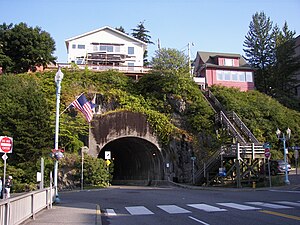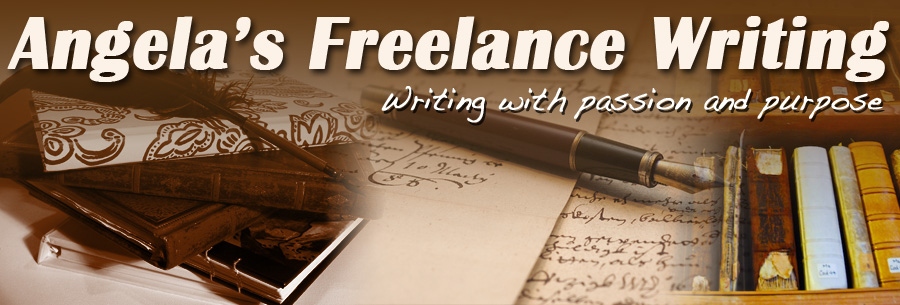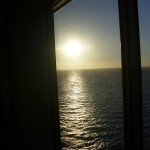
- Image via Wikipedia
As promised last week, here is a capsule of our visit to Ketchikan. On the second to last day of our cruise, we donned our raincoats, gloves, scarves, the whole nine yards, because we expected it to rain in this city which receives an average of 118 inches of rain in September. However, when the ship docked, there was no rain, just a few gray clouds which we didn’t mind. With an outdoor temperature of 57 degrees we were able to dispense with the warm gear and stroll comfortably to our bus that would take us on our tour.
We were taken on a five-minute tour of the downtown city loop which featured lots of small shops, most of which are closed in the winter, but do a brisk trade during the tourist season. Many of the shops specialize in diamond, gold silver and gemstone jewelry. We saw stores selling designer watches such as Phillip Stein – the Oprah watch – Movado, Cartier, Bulova and others. We left downtown, drove past the pier once more and headed for the highway that would take us out to the country. On the way, the driver slowed the bus to point out a river chock full of salmon making their way upstream.
As we sped along the slightly winding road, with mountains on one side and the sea on the other, I was struck by the houses perched on the very edge of the hillsides, with not an extra inch of rock to spare. The houses and the land seemed as one unit. But what amazed me even more were the staircases that extended from each house straight down to the sidewalk. The driver called it “The Staircase City.” You can see one in the picture above.
We passed a few hotels and lodges, among them a Motel 8, but no glass buildings or skyscrapers. We entered a short tunnel and when we emerged, our driver pointed out a small building with a few planes, which happened to be the Ketchikan International Airport. Alaska Airlines provides daily service northbound from Seattle and southbound from other Panhandle cities. Like Sitka, Ketchikan can only be accessed by sea or air. As a result, there are ferries that connect Alaska with the Lower 48. We also saw a number of floatplanes, some privately owned, poised near their hangars which looked like small barns. Some homes, located on the water’s edge, featured their own pier with their own floatplanes at the end of it.
Next week: Bight Park and totem poles










